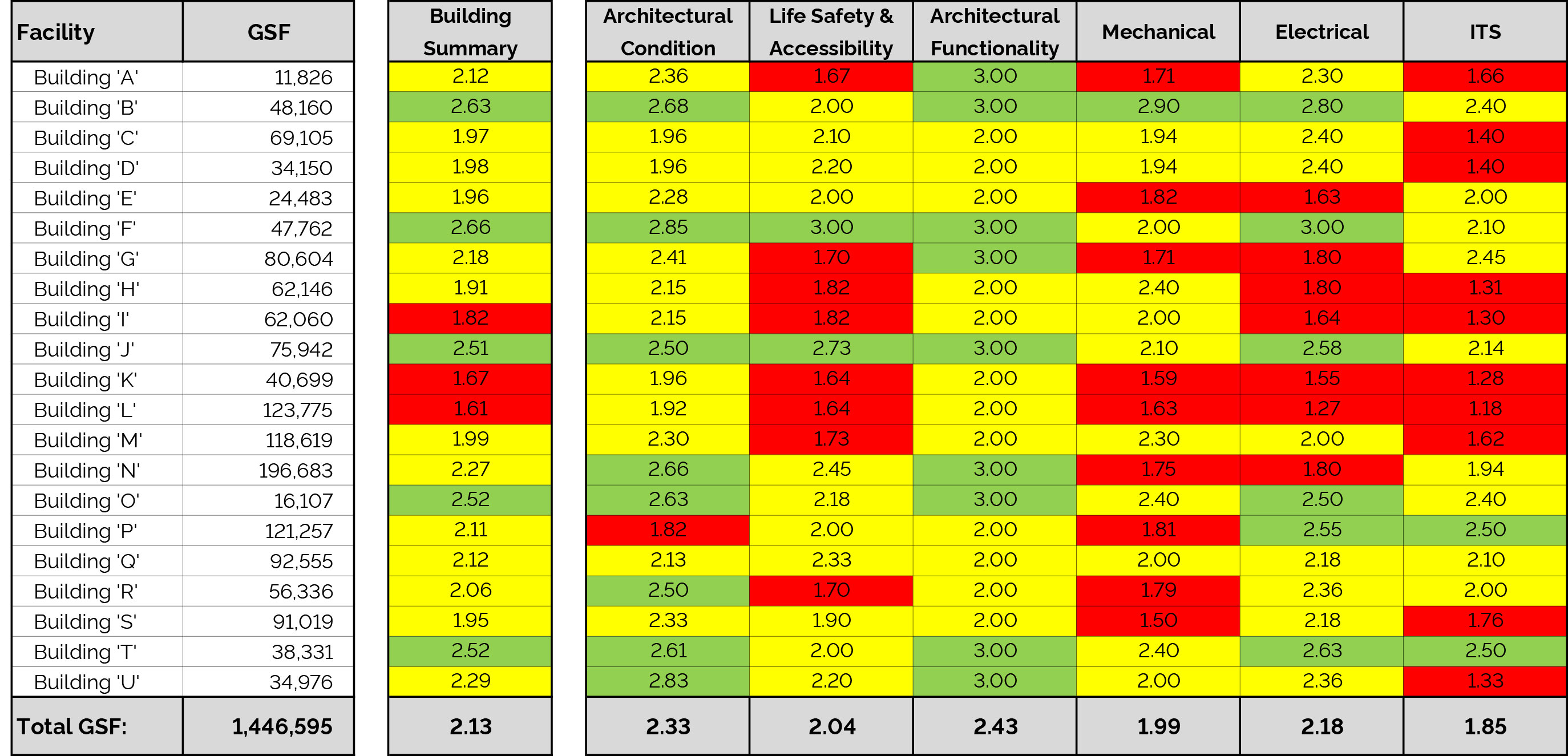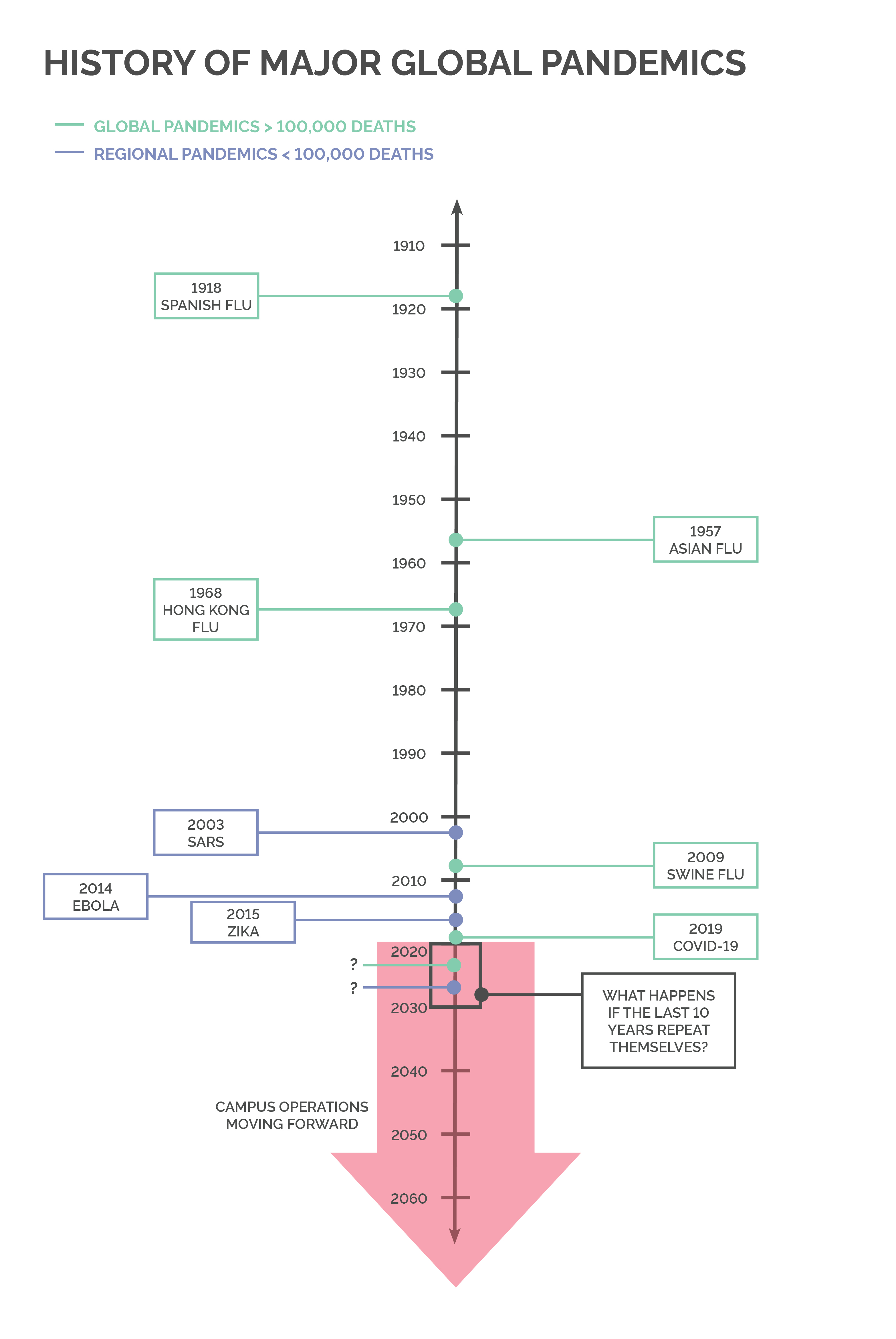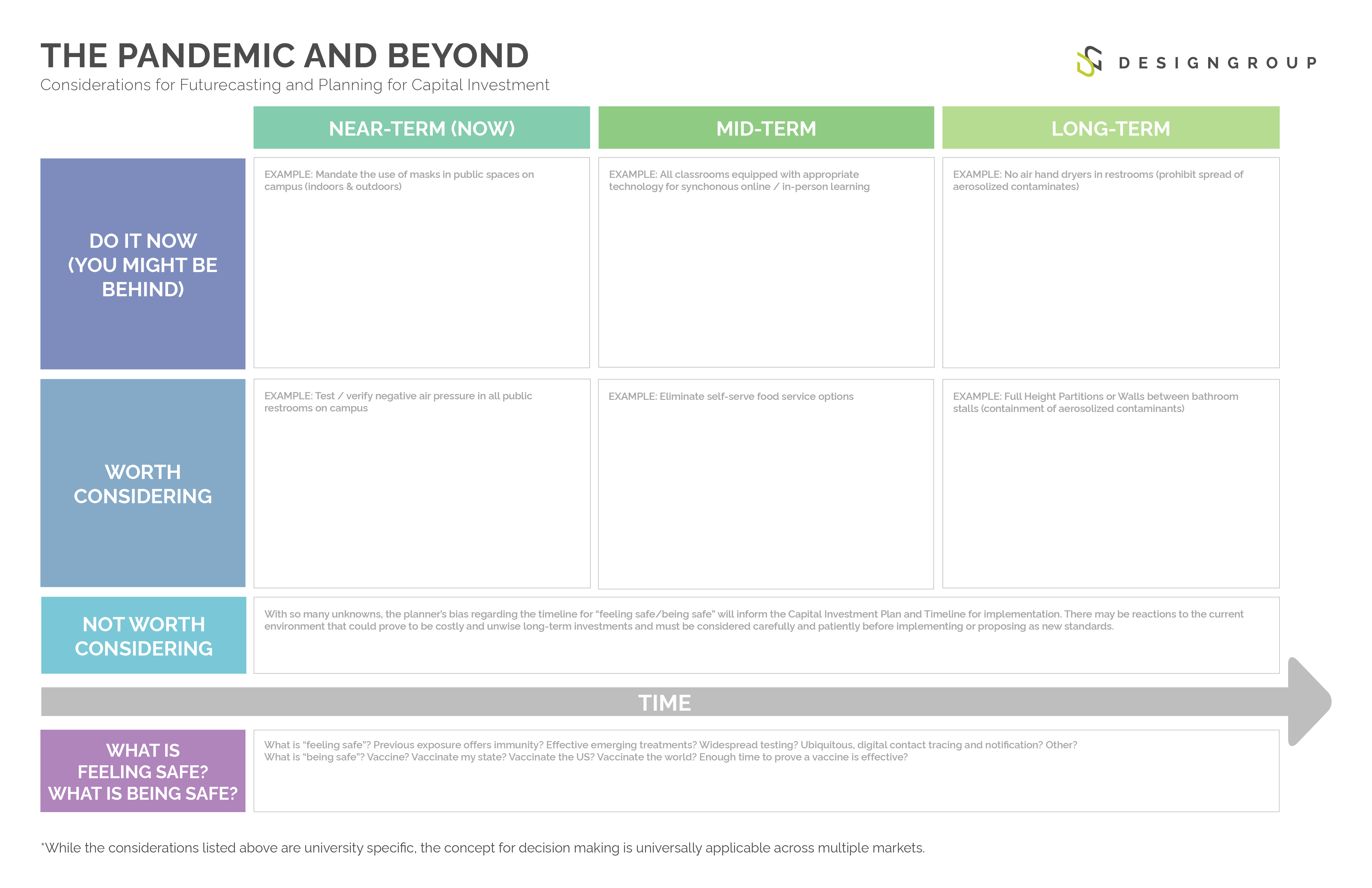Change is happening on college campuses. And the impact of the pandemic on universities will be as varied as they are. DesignGroup Education Market Leader Ben Niebauer offers insights for university planning — now and long term.
By: Ben Niebauer, RA, LEED AP BD+C // Associate Principal, Education Market Leader
By now, virtually every institution has organized task forces, workgroups, and committees to collect data and provide recommendations for the upcoming fall semester. And these groups have been focused on virtually every corner of the college experience, from classrooms and residential life, to athletics, infrastructure, technology, and working issues, to name just a few.
The most pressing concern right now is: “What does fall semester of 2020 look like?” One by one, universities have been scrambling to make that decision as quickly as possible to demonstrate stability, offer their prospective students and their parents some security, and sway anyone who might be on the fence about returning to campus (or even starting their freshman year).
For some institutions, like Otterbein University in Westerville, Ohio, residence halls will be filled and in-person classes will resume this August. Ithaca College has indicated that they too will be back on campus, but with a slightly later start date. Others, like Boston University, are more conservative, indicating that classes will be fully online until at least Spring of 2021. Many others will be back on campus (with restrictions) and ending in-person classes by Thanksgiving to stay ahead of the Flu season and reduce student travel, which some scientists indicate could create a “second wave” of health and safety concerns.
The responses are as unique as the institutions who are making them, but the desire to know now is becoming increasingly imperative to both attract students and to give faculty/staff time to prepare for whatever their future might be. While there are no “silver bullet” solutions to solve the needs at all campuses, we’ve identified several basic, but urgent, planning strategies for universities to consider as they move forward.
Focus on Learning
The last few months have given us real evidenced-based data to support arguments for best practices in curricular delivery. It’s time to use rigorous research and lessons learned from last semester’s emergency response, from across all sectors of campus. And above all else, it should include the voices of students. Focusing on the future while learning from the (very) recent past will result in better teaching, better opportunities, and better bottom lines.
Move from Restrictions to Expectations
While the idea of “restriction” is antithetical to the idea of a vibrant collegiate experience, the reality is: until we have a vaccine for COVID-19, restrictions (such as face masks or classroom de-densification) will be a part of college life. Just as college students should expect that institutions are taking measures to protect them, colleges should project a message that they expect students to actively participate in these protective measures to protect themselves and each other. Clarity will be key to establishing ongoing expectations.
Keep it Simple
Every institution has their start-up procedures/checklists for returning to campus, and many of them are being modified. Consider coding these documents with a simple Red-Amber-Green system that helps facilities staff to prioritize work. Graphics can go a long way to simplifying the complex.
Communicate, Communicate, Communicate
Students, parents, faculty, staff, administrators, boards of trustees, communities, partners...all will require specific forms of communication about new policies and procedures. There is no such thing as over-communication, but if it’s coming from your university, it should be consistent in both message and brand. Universities should engage their graphics and marketing departments in developing everything from e-blasts to restroom or elevator signage.
Don't Be Near-Sighted
Fall is rapidly approaching, and if you don’t have a plan in place, you’re falling behind your peers. But also keep in mind: the decisions you make about your facilities today could be decisions you live with for decades. What happens if there is no vaccine for COVID-19 in six months? In two years? What if the last 10 years repeat themselves? Short-term solutions may create long-term pains. Understanding the lifecycle cost implications of the policies/changes you enact is mission critical.
Be a Leader
Incoming college students are more aware and knowledgeable about global, political, and social issues than ever before, and they use these factors to differentiate between universities they choose to attend. “Does XYZ college celebrate diversity?” “How ‘green’ is their campus?” “How will ABC college keep me safe, both now and in the future?” Institutions that demonstrate leadership in these areas, and who represent themselves as good stewards of their student’s dollars – through flexibility, utilization, quality, or cleanliness of the spaces on campus – are and will continue to be the leaders of the pack.
Plan Now
With these factors in mind, DesignGroup has developed a simple, tactical planning tool to help institutions think about and prioritize for both immediate needs and your longer-term horizon. It represents a snapshot of current considerations all of our university clients are grappling with, organized in a way to help them prioritize and plan for capital investment in the new normal. We believe this will be a helpful tool in future-proofing universities to better serve the needs of the next generation of learners.

Ben Niebauer, RA, LEED AP BD+C // Associate Principal, Education Market Leader
Ben leads DesignGroup’s education practice. He has focused his 18 year career on exceptional design and planning for academic facilities. Ben has significant experience designing student centered environments including health science facilities, laboratories, over 5,500 student housing beds, and has assessed and planned 30 million square feet of higher education campuses. Ben is an active participant with the Society of College and University Planners.




